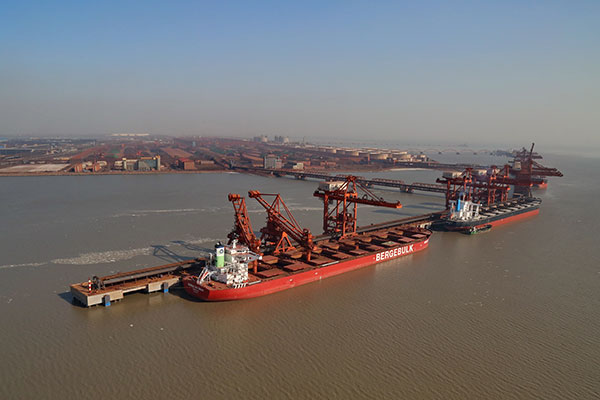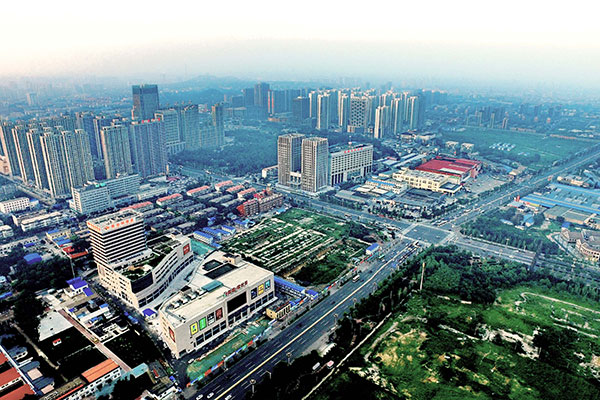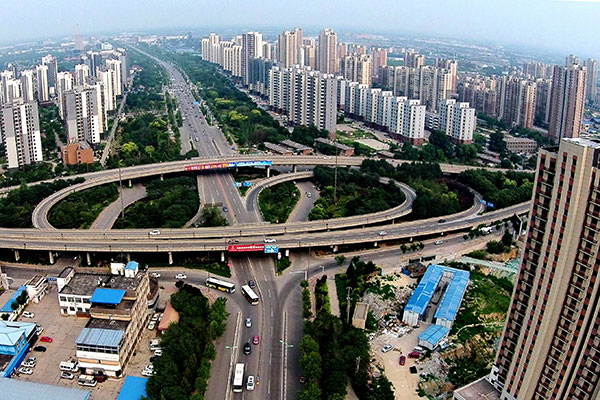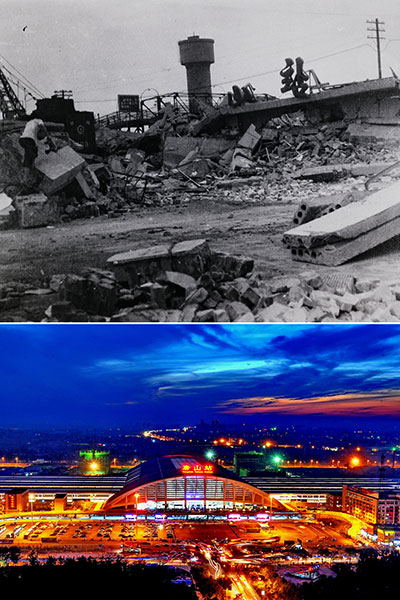
Photo taken on Jan 26, 2016 shows view of Caofeidian Harbor in Tangshan, north China’s Hebei province. In the early hours of July 28, 1976, one of the deadliest earthquakes of the 20th century toppled Tangshan, killing more than 240,000 people and injuring another 160,000. The deadly earthquake leveled Tangshan in just 23 seconds, with 96 percent of the city’s architecture generally destroyed. Yet Tangshan has been building a miracle on its debris ever since. By the year 2015, the per capita gross national product and fiscal revenue of Tangshan ranked first in Hebei. [Photo/Xinhua]
Standing in the center of Tangshan, Hebei province, one can see rows of buildings stretching for miles-just like many other modern cities in China.
There is no trace of the deadly earthquake that wiped out the city in 1976. Photos from the time show that nearly all the buildings collapsed. Nearly 95 percent of residential buildings and 90 percent of public buildings were destroyed.

Photo taken on July 26, 2016 shows an aerial view of downtown Tangshan, north China’s Hebei province. [Photo/Xinhua]
In the four decades since the quake, the city has been completely reconstructed. Last year, Tangshan’s GDP was 610 billion yuan ($94 billion)-ranking it No 1 in Hebei and 25th in China-a far cry from the 2.16 billion yuan recorded in 1975.
As an industrial hub, Tangshan leads the country in heavy industries, such as steel, coal, chemicals and equipment manufacturing, and its port is connected to 160 ports in more than 70 countries. The annual cargo capacity is 490 million metric tons, making it the sixth-largest port in China.

Photo taken on July 7, 2016 shows the scenery of eastern downtown Tangshan, north China’s Hebei province. [Photo/Xinhua]
The city has set a goal for the port’s involvement in the proposed Belt and Road Initiative, looking to become a hub connecting countries across Northeast Asia.
Last year, Tangshan’s urban area covered 3.08 square km, and the urban population was 2.5 million. Per capital disposable income rose to 31,272 yuan from 261 yuan in 1975, and the number of students at the city’s higher-education establishments was 111,421, a sharp rise from 4,559 in 1985.
After 1976, the city adopted an alternative name, Phoenix city, after the legendary bird that was reborn in the flames, just as the new Tangshan was born from the disaster of the earthquake.

Combined photo shows a file photo (up) of Tangshan railway station after the deadly quake in 1976 and a photo taken on Sept 27, 2014 showing the new railway station of Tangshan.[Photo/Xinhua]
